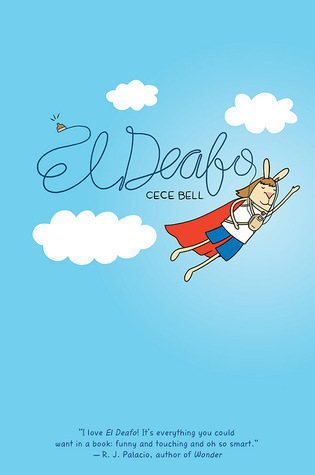Maggie Mayfield, a
precocious sixth grader, is given a beautiful journal for her birthday - the
perfect gift for an aspiring memoirist and future President of the United
States! Maggie dutifully records her year: a year, it turns out, that sees her
father slowly lose his faculties to multiple sclerosis. Maggie keenly observes
her family dynamics while pushing herself academically and emotionally through
the trials and triumphs that await her.
Maggie is a bit like a
younger version of Jaclyn Moriarty’s titular character in The Murder of
Bindy Mackenzie. She is an extraordinary know-it-all, a sassy lass who
insinuates herself into situations without a shred of self-awareness, one whose
embarrassing lack of social cues simultaneously rewards and punishes her. She’s
winning her umpteenth consecutive Student of the Month award while flopping
spectacularly at physical education. This is a kid who elicits cheers and
groans, often within a single paragraph.
Sovern is a first-time
author, and The Meaning of Maggie is reportedly a fictionalized memoir. This
closeness to the source material is what initially makes the novel intriguing
and enjoyable, but also what ultimately buckles the proceedings entirely.
Maggie’s narration is
consistently enjoyable. As the youngest sister, she paints energetic portraits
of her older siblings. Layla, the eldest, is too cool to be even vaguely aware
of Maggie’s existence, and Tiffany, the shrill middle sister, approaches
caricature-like status, especially in Maggie’s snarky, hilarious footnotes.
“When Layla was little Dad called her Layla Hayla because he thought she was
the bee’s knees. He calls me “Mags” because it sounds cool and he calls Tiffany
“Tiffany” because if you call her anything else, she loses her mind” (p. 55).
As the family comes to
terms with Dad’s “sleepy” limbs, Maggie’s observations become heartbreaking.
She seems innocent of, even removed from, the situation’s gravity, and the
family’s interactions between and among each other resonate with a sad, heavy
hope. Small, simple revelations paint a family in crisis, even if Maggie
remains completely and curiously unaware. Maggie’s slow understanding of the
severity of her father’s condition serves as the book’s emotional crossroads,
and Sovern handles the awakening with grace. Sovern’s treatment of multiple
sclerosis is thoughtful, compassionate, and immediate. It’s a beautiful
portrait of a family dealing with the unthinkable.
Reviewers, both for
professional publications and on Goodreads, have indicated that the novel’s
time period (the late 1980s) seemed flimsy and awkward. It certainly isn’t
fully realized nor is it integral to the story, and Sovern unfortunately
stumbles with several anachronisms. I was Maggie’s age in 1988, and, to my
recollection, remember almost no discussion of medical marijuana; nor do I
recall girls being referred to as “hotties." I’m fairly certain, too, that the
use of full-stops as emphasis (like. doing. this.) is a more recent literary
device, and that most 11-year-olds would not have employed such techniques in their
journals.
Maggie, too, is a
strangely inconsistent character, even when her musings are hilarious. This is
a child who reads voraciously and is academically superior to her peers, yet
doesn’t know what a spleen is. She’s childish and mawkish on some pages and
way-beyond-her-years on others. The “precious” quotient is through the roof,
and not in the way puppies are precious. More in the way that hipsters who
enjoy pickling foods are precious.
Despite these flaws, the
book is enjoyable and, in my school library, it has circulated like crazy. My
students, especially the girls, love it, and I can understand why it is so dear
to them. Maggie is a sparkplug of a character, and her wittiness will appeal to
many young readers. The Meaning of Maggie, in terms of Newbery-ness,
lacks any distinguishing quality, and will likely be but a blip on the radar
come awards season. Although its treatment of multiple sclerosis is sensitive
and uplifting, I doubt, too, that it will nab a Schneider Family Book Award
(which, if I were to bet, will go to Lisa Graff’s delightful Absolutely
Almost).
Sorry, Maggie. My students love you, but I don’t
think the Newbery committee will.
Published in May by Chronicle Books
*****
Today's guest reviewer is Joe Prince, Librarian at Marshall Middle School, and Chair of the North Allegheny (PA) School District Library Department. Check out his 6th Grade Mock Newbery -- it's great!





